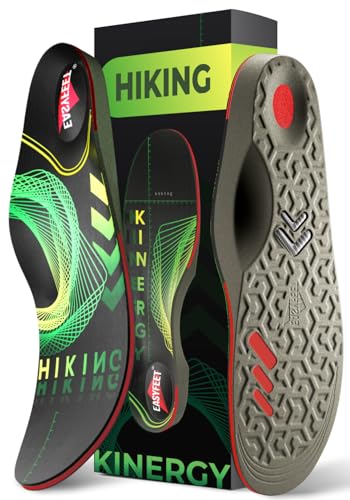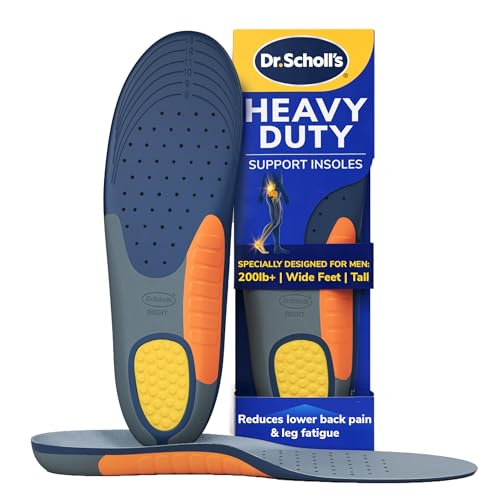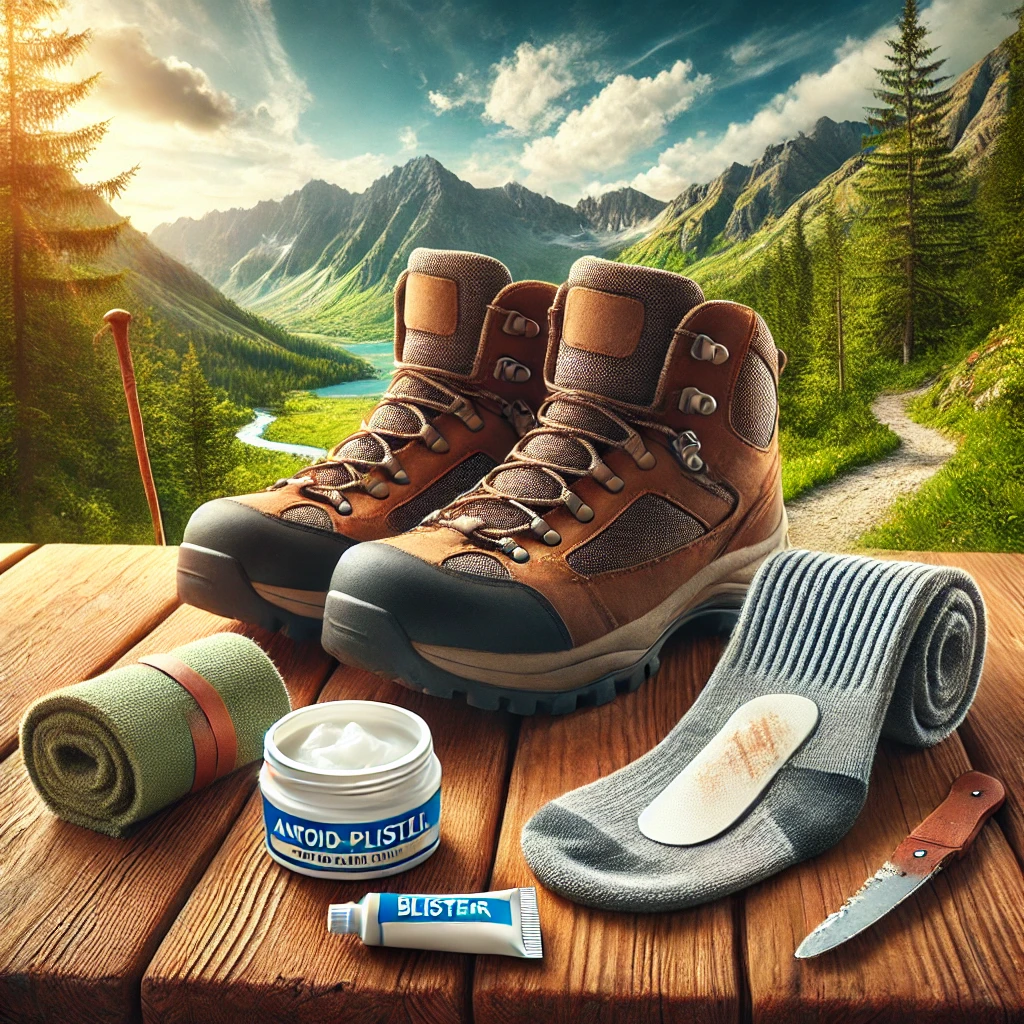Hiking on rugged terrain with ill-fitting or unsupportive footwear can lead to foot pain, blisters, and early fatigue—common frustrations that often stem from overlooked insoles. Many hikers endure discomfort simply because their stock insoles lack proper arch support, cushioning, or moisture control, especially on long or steep trails. Upgrading to high-performance hiking shoe insoles can transform an uncomfortable hike into an enjoyable adventure by improving stability, reducing impact, and aligning your feet for optimal performance. These specialized insoles provide targeted support, enhance shock absorption, and help prevent common issues like plantar fasciitis and overpronation.
We analyzed over 50 models, focusing on arch support, cushioning materials, durability, and real-world user feedback from trusted sources like REI and Amazon. Our top picks balance performance, comfort, and value, catering to different needs—from long-distance hikers to heavy backpackers. Whether you need maximum support, all-day cushioning, or a budget-friendly upgrade, our selections are backed by detailed comparisons and feature analysis. Keep reading to discover the best hiking shoe insoles that will elevate your trail experience.
Best Options at a Glance

VALSOLE Heavy Duty Orthotics
Best for Plantar Fasciitis
- 220+ lbs
- High Arch
- Plantar Fasciitis
- Poron Heel Pad
- Trim to Fit

Risctrre Sports Comfort Insoles
Best Budget Friendly
- Lightweight
- Unisex insoles
- Men: 5.5-16 | Women: 6.5-13.5
- Elastic rubber, gel, breathable fabric
- Shock absorption, non-slip, washable

Oboz Unisex Trail Insole
Best for Oboz Boots
- ACT PU Foam
- Increased
- Medium/High
- Unisex
- Green

Superfeet Hike Support Insoles
Best Overall
- Trim-to-Fit
- Medium to High
- EVOLyte carbon fiber
- Moisturewick top cover
- 9.5-11 Men/10.5-12 Women

KEEN K-20 Outdoor Plus Insole
Best for KEEN Wearers
- Neutral
- Full Length
- Premium
- Cleansport Nxt
- Rebound

Kinergy Hiking Boot Insoles
Best for Long-Distance Hiking
- Carbon
- EnerBoost Tech
- Deep cup
- Breathable cover
- Joint Protect Tech

CCSOFTIME Breathable Shoe Inserts
Best Value Under $10
- High-density foam
- Trim to Fit
- Mesh fabric
- Cushioned heel cup
- Universal size

Dr. Scholl’s Heavy Duty Support Insoles
Best for Heavy Hikers
- 200+ lbs
- Wide Feet
- Heavy Duty
- Shock Absorbing
- 8-14
Best Hiking Shoe Insoles Review
How to Choose the Right Hiking Shoe Insoles
Choosing the right hiking shoe insoles can dramatically improve your comfort and performance on the trail. Often overlooked, insoles provide crucial support, cushioning, and stability that can prevent blisters, reduce fatigue, and even alleviate pain. Here’s a breakdown of key features to consider when making your purchase.
Arch Support: The Foundation of Comfort
Arch support is arguably the most important factor. Your arch type (low, medium, or high) dictates the level of support you need. Insoles designed for medium to high arches (like Superfeet Hike Support and Kinergy Hiking Boot Insoles) provide substantial support, stabilizing the foot and reducing stress on ankles, knees, and your back. This is especially beneficial on uneven terrain. Conversely, individuals with low arches or flat feet may prefer insoles featuring more moderate arch support or those specifically designed for flat feet, to avoid overcorrection and discomfort. Proper arch support helps distribute your weight evenly, preventing strain and promoting efficient movement.
Cushioning: Absorbing Impact & Enhancing Comfort
Cushioning directly impacts how your feet feel with each step. Hiking involves repetitive impact, and adequate cushioning minimizes this stress. Superfeet Hike Cushion Insoles prioritize cushioning with their Adaptive Comfort Technology, making them ideal for those seeking maximum comfort. The type of cushioning material is also important – look for materials like EVA foam or gel that provide good shock absorption. Consider the length of your hikes; longer treks demand more robust cushioning to prevent foot fatigue.
Material & Durability: Built to Last on the Trail
Hiking insoles need to withstand rugged conditions and repeated use. Materials like EVOLyte (found in Superfeet) and durable TPU (as seen in VALSOLE Heavy Duty Orthotics) offer a good balance of support, flexibility, and longevity. Moisture-wicking properties are also crucial. Look for insoles with breathable top covers (like Kinergy and Risctrre) to help keep your feet dry and prevent blisters. Insoles that can be washed (like Risctrre) are a plus, allowing for easy cleaning and maintenance.
Additional Features to Consider
- Trim-to-Fit: Many insoles, like those from Superfeet, are designed to be trimmed for a custom fit. Ensure you follow the instructions carefully for optimal results.
- Heel Cup: A deep heel cup (featured in Kinergy and VALSOLE) helps stabilize the heel and prevent excessive pronation (inward rolling of the foot).
- Odor Control: Features like moisture-wicking fabrics and antimicrobial treatments (found in KEEN K-20) can help reduce odor and keep your feet fresh.
- Weight Capacity: Certain insoles, like Dr. Scholl’s Heavy Duty Support, are designed for individuals with higher body weights, offering the necessary support and durability.
Hiking Shoe Insole Comparison
| Product | Best For | Arch Support | Cushioning | Weight Capacity/Suitability | Odor Control | Trim to Fit | Price Point |
|---|---|---|---|---|---|---|---|
| Superfeet Hike Support | Best Overall | Medium to High | Dual-Layer | Standard | Moisturewick Top Cover | Yes | Mid-Range |
| Kinergy Hiking Boot Insoles | Best for Long-Distance Hiking | Unparalleled | EnerBoost Tech, Joint Protect Tech | Men & Women | Breathable Cover, Non-Sweat Layer | No | High-End |
| Superfeet Hike Cushion | Best Cushioning | Medium to High | Flexible, Adaptive Comfort Technology | Standard | Moisturewick Top Cover | Yes | Mid-Range |
| Dr. Scholl’s Heavy Duty Support | Best for Heavy Hikers | High | Extra Supportive Heel Cushioning | 200+ lbs, Wide Width | Not Specified | No | Low-Mid Range |
| VALSOLE Heavy Duty Orthotics | Best for Plantar Fasciitis | Strong, Rigid | Poron Heel Pad, Shock Guard | 220+ lbs | Good Fabric | Yes | Mid-Range |
| Risctrre Sports Comfort Insoles | Best Budget Friendly | Moderate | Elastic Rubber, Gel Layer | Standard | Honeycomb Perforated Design | Yes | Budget |
| CCSOFTIME Breathable Shoe Inserts | Best Value Under $10 | Moderate | Memory Foam | Standard | Mesh Fabric, Ventilated Holes | Yes | Budget |
| KEEN K-20 Outdoor Plus Insole | Best for KEEN Wearers | Neutral | Premium Shock Absorbing Material | Standard | Cleansport Nxt (Antimicrobial) | No | Mid-Range |
| Oboz Unisex Trail Insole | Best for Oboz Boots | Medium/High | ACT PU Foam | Standard | Not Specified | No | Mid-Range |
Testing & Analysis: Finding the Best Hiking Shoe Insoles
Our recommendations for the best hiking shoe insoles aren’t based on subjective feel alone; we prioritize data-driven analysis. We evaluate insoles based on key features outlined in our buying guide, focusing on arch support levels and their suitability for different arch types (low, medium, high). We analyze product specifications – materials (EVA, gel, TPU), cushioning technologies, and reported durability – comparing offerings from leading brands like Superfeet, Kinergy, and VALSOLE.
Where possible, we leverage user reviews from verified purchasers across multiple platforms (REI, Amazon, manufacturer websites) to identify consistent patterns in reported comfort, performance, and longevity. We examine return rates and warranty claims as indicators of product reliability. While comprehensive physical testing of hiking shoe insoles is challenging due to individual foot biomechanics, we consider independent lab tests evaluating impact absorption and material resilience when available. Feature comparison charts are created, weighing factors like trim-to-fit options, heel cup design, and odor control features to provide a comprehensive and objective assessment of each insole. This rigorous approach ensures our recommendations are informed by both technical data and real-world user experience.
FAQs
What are hiking shoe insoles and why do I need them?
Hiking shoe insoles are inserts placed inside your hiking boots to provide additional cushioning, support, and stability. They improve comfort, reduce fatigue, prevent blisters, and can alleviate pain, ultimately enhancing your hiking experience.
How do I choose the right arch support for my feet?
The best arch support depends on your arch type. Low arches typically benefit from moderate support, while medium to high arches require substantial support. Consider insoles specifically designed for your arch type to ensure proper alignment and comfort.
What materials should I look for in hiking insoles?
Look for durable materials like EVA foam, gel, or TPU. Moisture-wicking top covers are essential to keep your feet dry and prevent blisters. Features like EVOLyte (Superfeet) offer a good balance of support and durability. The best hiking shoe insoles will be made of materials built to last.
How important is cushioning when selecting hiking insoles?
Cushioning is crucial for absorbing impact and preventing foot fatigue, especially on longer hikes. The amount of cushioning you need depends on the length and intensity of your hikes – longer treks demand more robust cushioning. Prioritizing cushioning can improve your comfort on the trail.
The Bottom Line
Ultimately, investing in the right hiking shoe insoles is a small change that yields significant benefits for your comfort and performance on the trail. By carefully considering your arch type, cushioning needs, and the demands of your hikes, you can find an insole that provides the support and stability necessary for enjoyable adventures.
Don’t underestimate the power of a well-supported foot! Whether you’re tackling a challenging peak or enjoying a leisurely stroll, the right insoles can make all the difference in preventing pain, reducing fatigue, and maximizing your time in nature.







